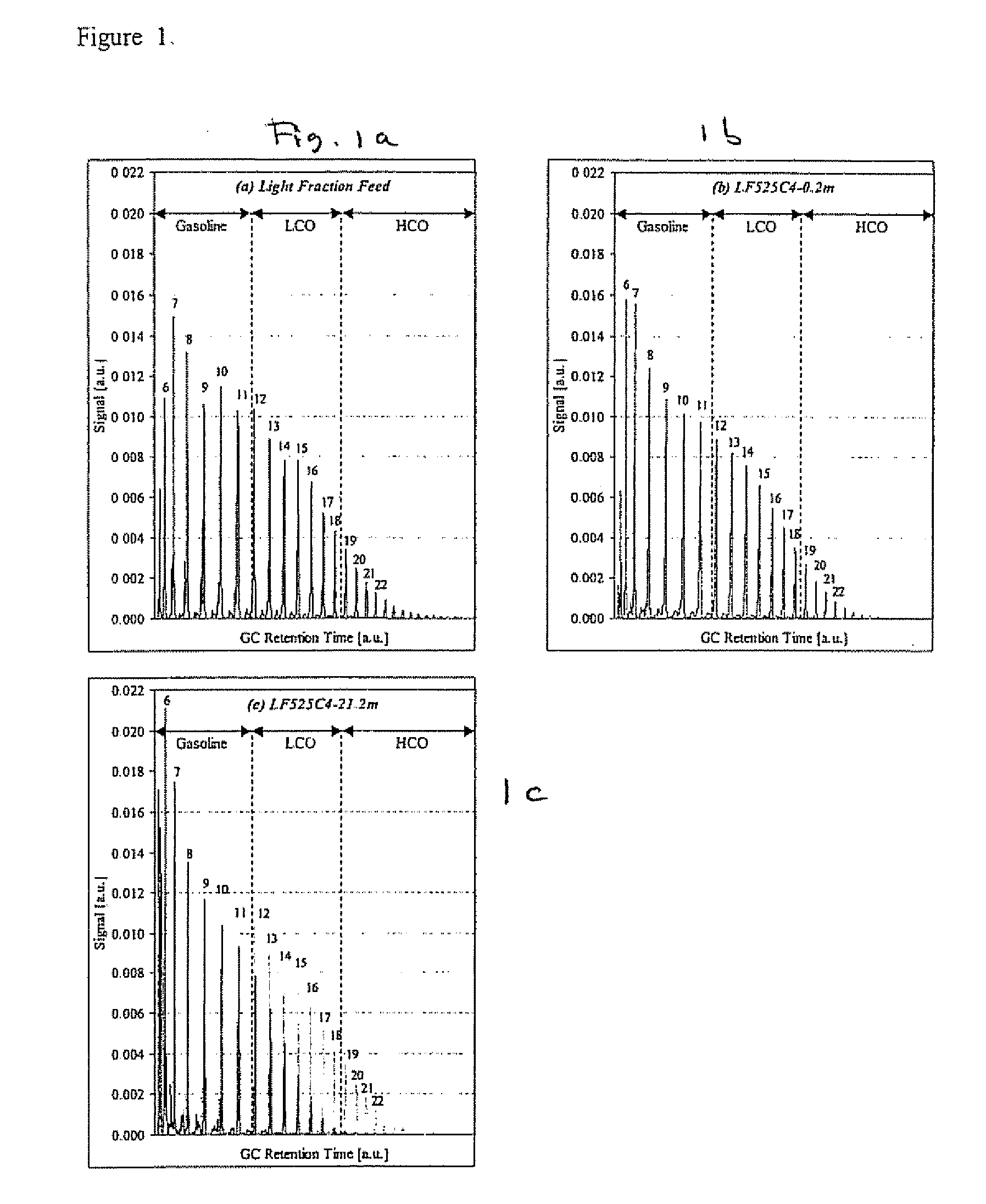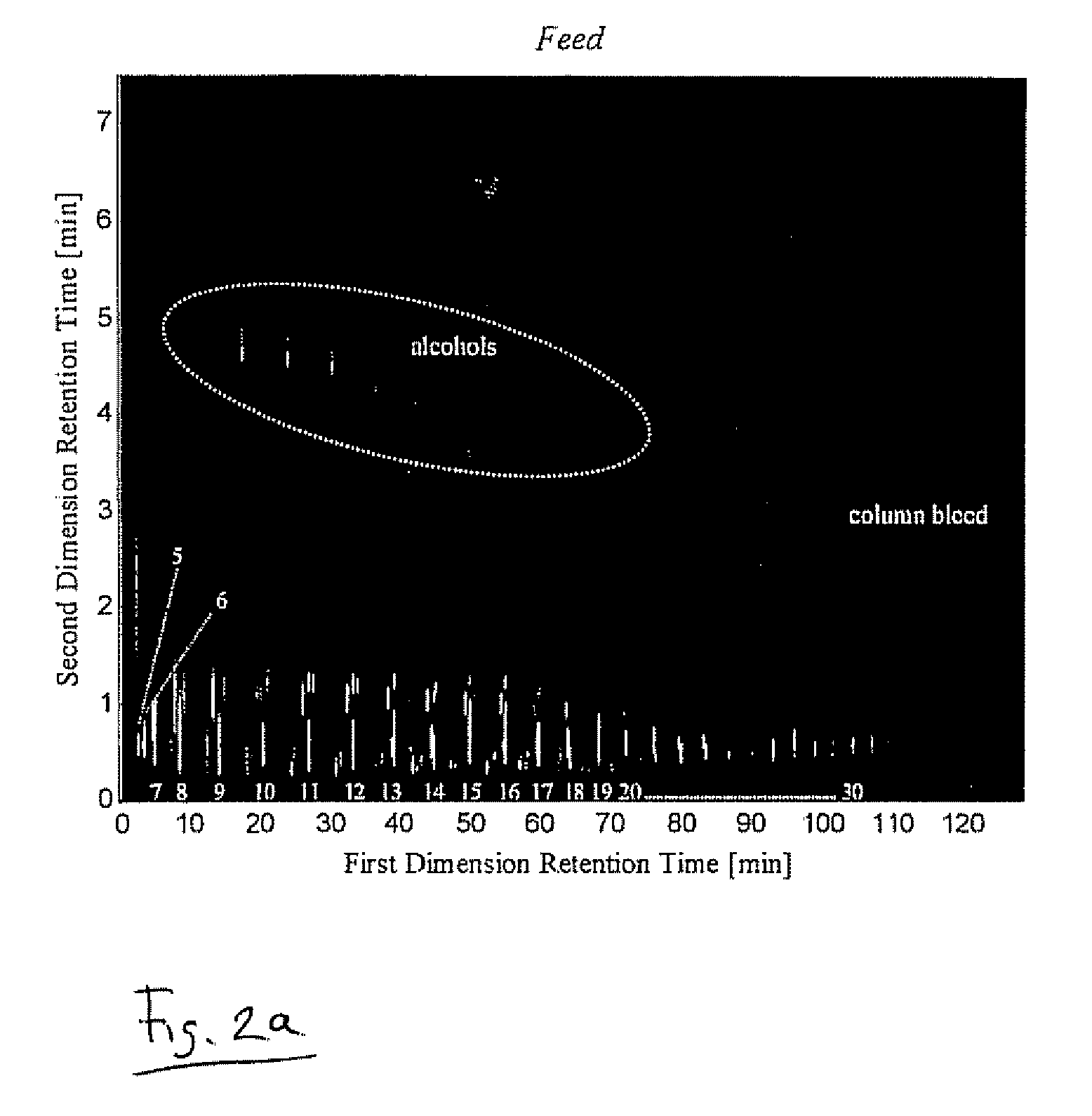Method to measure olefins in a complex hydrocarbon mixture
a technology of complex hydrocarbons and olefins, which is applied in the direction of separation process, instrumentation, dispersed particle separation, etc., can solve the problem that gcxgc equipment limited the application range to samples
- Summary
- Abstract
- Description
- Claims
- Application Information
AI Technical Summary
Benefits of technology
Problems solved by technology
Method used
Image
Examples
example
[0028] A Fischer-Tropsch Light Fraction (FT-LF) has been cracked with a commercial equilibrium catalyst (E-cat) in a laboratory-scale once-through microriser reactor. The reactor temperature has been set at 525° C. and a catalyst-to-oil ratio (CTO) of 4 gcatalyts·goil−1 has been applied. The reactor length has been varied from 0.2 m to 21.2 m, which corresponds to a residence time from 50 ms to 5 s.
[0029] The gaseous products from the cracking experiments have been analysed with a gas chromatograph equipped with a flame ionisation detector (FID) and thermal conductivity detector (TCD). Detailed information has been obtained on the amount of hydrogen and C1-C4 hydrocarbons. The entrained liquid fraction has been lumped in a C5 and C6 group. The liquid samples have been analysed according to ASTM D2887 Simulated Distillation and the obtained ‘one-dimensional’ chromatograms have been corrected for the liquid recovery. Gasoline has been defined as the C5-215° C. product range. Light Cy...
PUM
 Login to View More
Login to View More Abstract
Description
Claims
Application Information
 Login to View More
Login to View More - R&D
- Intellectual Property
- Life Sciences
- Materials
- Tech Scout
- Unparalleled Data Quality
- Higher Quality Content
- 60% Fewer Hallucinations
Browse by: Latest US Patents, China's latest patents, Technical Efficacy Thesaurus, Application Domain, Technology Topic, Popular Technical Reports.
© 2025 PatSnap. All rights reserved.Legal|Privacy policy|Modern Slavery Act Transparency Statement|Sitemap|About US| Contact US: help@patsnap.com



